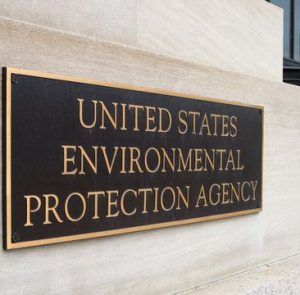
Lack of Congressional Support Contributes to Two-Decade Low in Civil Cases Against Polluters in FY 2022
For the Environmental Integrity Project’s new analysis of 20 years of EPA enforcement data, click here. For EPA’s announcement today, click here.
Washington, D.C. – Despite hopes that the Biden Administration would reverse a long-term decline in environmental enforcement, the number of civil cases closed against polluters in fiscal 2022 was the lowest in at least two decades, according to new EPA data.
The 72 civil enforcement cases against polluters concluded in court during the federal fiscal year that ended on Sept. 30 was the lowest number in at least 22 years, based on the annual reports that EPA releases for each fiscal year. For comparison, the Trump Administration closed an average of 94 cases per year, while the Obama Administration closed an average of 210 during its eight-year tenure, and the Bush Administration averaged 176 per year during its second term.
“This decline in environmental enforcement is dangerous, because it puts the health of downwind communities at risk from sometimes deadly pollution,” said Eric Schaeffer, Executive Director of the Environmental Integrity Project and former Director of Civil Enforcement at EPA.
In fiscal year 2022, EPA also referred 88 cases to the Justice Department for civil prosecutions, the second-lowest number in 22 years (after 2020), and far lower than referrals made between 2001 and 2016, which ranged from 140 to more than 300 per year.
Other key facts in EPA data released today:
- The value of supplemental environmental projects that are negotiated as part of civil case agreements for cleanup was the lowest on record in fiscal year 2022, only $803,000, compared to an average of $54 million from 2001 through 2021 (adjusted for inflation). These projects help offset the harm that illegal pollution has caused to communities nearby.
- The number of criminal environmental investigations opened (117) in fiscal 2022 was the second lowest on record, after 115 in 2017, going back two decades. Jail time for criminal defendants reached an all-time below
- The total value of pollution control projects ($4.3 billion) required as part of civil enforcement actions (“injunctive relief”) in fiscal 2022 was the second lowest amount in two decades (after $2.8 billion in 2020), when adjusted for inflation.
Part of the reason for the continued decline in key areas of EPA enforcement was Congress’ failure to confirm Biden’s pick for administrator of EPA’s civil enforcement office – leaving the department leaderless and the nomination still pending. Lawmakers also refused to reverse long-term cuts to funding, which have reduced EPA’s civil enforcement workforce by nearly a third since 2012, with the elimination of more than a thousand positions. In the criminal enforcement area, EPA had 189 criminal enforcement agents in fiscal 2012 but only 155 in fiscal 2022.
“The professional staff at EPA appears to be doing the best it can with increasingly limited resources,” said Schaeffer, former Director of Civil Enforcement at EPA. “But they are not helped by ruthless budget cuts and the inability of the Senate to confirm President Biden’s pick for Assistant Administrator of EPA’s Office of Enforcement and Compliance Assurance, David Uhlmann.”
Uhlmann, a former top environmental crimes prosecutor with the U.S. Department of Justice and director of the environmental law program at the University of Michigan, was nominated by President Biden in June of 2021 with enthusiastic support from public interest groups, industry lawyers, and EPA veterans. But Uhlmann’s confirmation has languished in a split U.S. Senate, with Louisiana Republican Sen. Bill Cassidy delaying EPA confirmations for months to protest the Biden EPA’s carbon capture and sequestration policies.
EPA enforcement records show at least 257 major sources of air pollution with high priority violations that have persisted for more than 30 months without any real enforcement response. Similarly, discharge monitoring reports show that more than 900 facilities have violated water pollution limits at least 50 times over the past three years but faced no significant enforcement action, according to EPA’s Enforcement and Compliance History Online (ECHO) database.
For example, EPA has yet to require the Denka polymers plant in La Place, Louisiana, to cut emissions of chloroprene that the agency concedes have exposed a nearby African-American community to dangerous levels of this carcinogen.
“The former President’s hostility to EPA and to the enforcement of environmental laws in particular are well known,” said Schaeffer. “But Democrats have controlled the House of Representatives for the past four years and the Senate for the past two. At this point, the Congressional refusal to support the enforcement of environmental laws it enacted is a bipartisan problem.”
Schaeffer urged the Senate and House to quickly act to fund EPA for the remainder of the 2023 fiscal year at a sufficient level to enforce the environmental laws that Congress wrote, and also to confirm the appointment of Uhlmann to lead the EPA enforcement office.
For a spreadsheet of 20 years of EPA enforcement data compiled by the Environmental Integrity Project, click here.
For EPA’s numbers released today on fiscal year 2022 enforcement totals, click here.
Tables with some of the most recent EPA data are below:
Annual Average Civil Case Conclusions and Referrals to Department of Justice
|
Fiscal Year |
Administration |
Administrative Case Conclusions |
Judicial Case Conclusions |
Referrals to Dept. of Justice |
|
2005-2008 |
Bush |
4,385 |
176 |
295 |
|
2009-2012 |
Obama |
3,118 |
182 |
263 |
|
2013-2016 |
Obama |
2,207 |
131 |
158 |
|
2017-2020 |
Trump |
1,673 |
94 |
106 |
|
2021 |
Biden |
1,489 |
114 |
98 |
|
2022 |
Biden |
1,584 |
72 |
88 |
Annual Average Criminal Investigations Conducted, Polluters Charged, and Years of Incarceration
|
Fiscal year |
Administration |
Criminal Investigations |
Polluters Charged |
Years of Incarceration |
|
2005-2008 |
Bush |
334 |
256 |
115 |
|
2009-2012 |
Obama |
356 |
243 |
80 |
|
2013-2016 |
Obama |
238 |
209 |
136 |
|
2017-2020 |
Trump |
165 |
118 |
92 |
|
2021 |
Biden |
123 |
105 |
28 |
|
2022 |
Biden |
117 |
111 |
21 |
Annual Average Value of Pollution Control Costs (Injunctive Relief) for Judicial and Administrative Civil Cases (Millions of Dollars)
|
Fiscal Year |
Administration |
Total Reported |
Total, adjusted to 2022 dollars |
Total Reported with outliers removed* |
Total, without outliers, adjusted for inflation* |
|
2005-2008 |
Bush |
9,288 |
13,487 |
9,288 |
13,487 |
|
2009-2012 |
Obama |
11,384 |
15,182 |
11,384 |
15,182 |
|
2013-2016 |
Obama |
9,510 |
11,940 |
7,160 |
9,050 |
|
2017-2020 |
Trump |
7,722 |
9,225 |
3,747 |
4,415 |
|
2021 |
Biden |
8,473 |
9,066 |
8,473 |
9,066 |
|
2022 |
Biden |
4,303 |
4,303 |
4,303 |
4,303 |
Annual Average Value of Supplemental Environmental Projects, Millions of Dollars
|
Fiscal year |
Administration |
Total |
Total (adjusted to 2022 dollars) |
|
2005-2008 |
Bush |
51.0 |
74.9 |
|
2009-2012 |
Obama |
36.7 |
44.2 |
|
2013-2016 |
Obama |
30.6 |
32.8 |
|
2017-2020 |
Trump |
21.8 |
23.4 |
|
2021 |
Biden |
12.3 |
13.2 |
|
2022 |
Biden |
0.8 |
0.8 |
The Environmental Integrity Project is a 20-year-old nonprofit organization, based in Washington, D.C., and Austin, Texas, dedicated to enforcing environmental laws and strengthening policy to protect public health and the environment.
Media contact: Tom Pelton, Environmental Integrity Project, (443) 510-2574 or tpelton@environmentalintegrity.org


